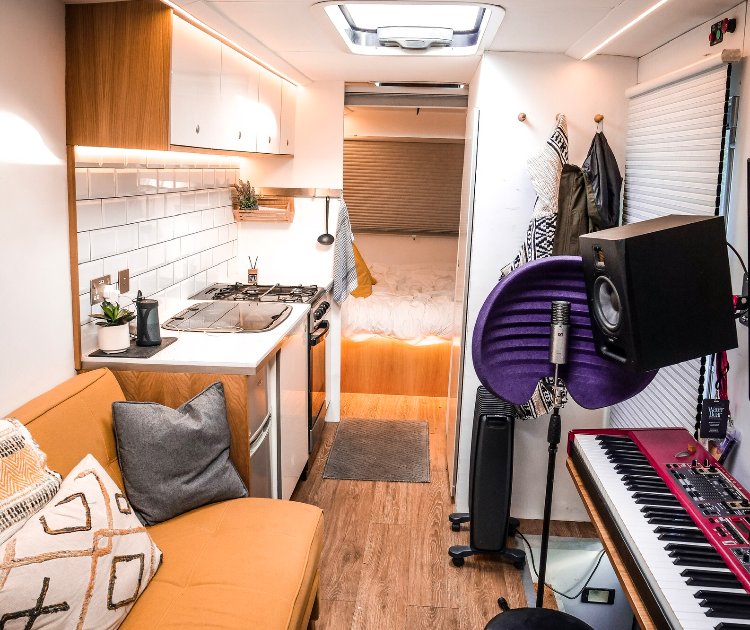Zoom SSH-6 Stereo Shotgun Microphone Capsule Review

Zoom SSH-6 Stereo Shotgun Microphone Capsule Review
My most watched video review, to date, is my Zoom SSH-6 Stereo Shotgun Microphone Capsule Review. It seems like a VERY popular mic… but is it better than microphones like the Rode VideoPro for people making YouTube videos? Well, I’m here to share my experience of the Zoom SSH-6 to help you make a decision on whether you should buy it.
What do people use the Zoom SSH-6 for?
Well, you can use this mic for various things. The most common are:
- foley
- producers capturing samples
- Interviewers recording interviews on the go for news reports
- Radio for interviewing on the go or in a controlled environment
However, there are some drawbacks to some of these uses so stick around to hear my personal experience on these!
The Zoom H5 & H6 comes with a Stereo Microphone Capsule as standard. It’s a wicked little mic and is great for capturing stereo sounds for my music productions, but not great at capturing direct sound. Sometimes I just want to have a very directional sound to capture a sound amongst a noisier environment, and that’s where this Zoom SSH-6 Shotgun Capsule comes in.
In the box you receive the Shotgun Capsule, and a Dead Cat – horrible name but it stops the wind for ruining your recordings outdoors!
There are little hooks that hold your dead cat on securely, and I like the attention to detail with things like this, it’s practical! If you are on location, these little details of those hooks stop you from losing your Dead Cat in the wind!
My personal favourite feature about the Zoom H5 & H6 is that the modules just snap into place by pushing them on. This makes it VERY quick to setup if you arrive on scene in a hurry and don’t want to miss a moment because of setting up time – clip in and go!
Another feature I like that feels very practical is that the capsule has it’s own volume dial on the front. This is SO helpful for capturing things on the fly. I find that between 3-5 is the best for minimising things being too loud and clipping, and still capturing those quiet sounds without too much hiss when boosting gain in post.
Another feature of the SSH-6 is that it is not just a directional microphone, it has a mid-side feature too. This means the microphone is effectively stereo and you can add in 3D elements of surroundings to the subject you are recording. You can control the amount of this stereo field in your audio by using buttons on the side and you can also record in RAW form, which allows you to save the audio of the directional mic and the Mid-Side as two separate files for you to mix in post production – Left being the directional shotgun mic, and the right side being the mid-side microphone so you can separate the left and right and have 2 separate files.
There is even a diagram on the screen that shows you how wide the stereo field is, and how much you can mix in (see below)
The Downsides to the SSH-6
The downsides to the SSH-6 are more software than hardware, however, my first point is that the Zoom Capsules can only be used with the Zoom recorders so you won’t be able to use the Shotgun SSH-6 as a stand alone mic. This kinda sucks if you only want the mic, but I understand why Zoom have done this.
Another small but capable downside is that you can’t change the mid-side levels whilst recording. This is annoying if something really loud starts to happen in the surrounding area and you are picking up all of that bleed during an interview because the mid-side is too loud. So make sure you plan ahead as to whether or not you are likely to want it. My failsafe is just to have the file recording in RAW so I can edit the Mid-Side levels afterwards, and therefore don’t need to worry too much whilst recording.
The Zoom H5 & H6 does not come with a shock mount. So if you are planning to be moving around a lot with this mic, think again, because you will have a LOT of unwanted noise. This is a big benefit to having the Rode VideoPro because it comes with a shock mount, but if you can keep stable or mount the zoom on a camera that is on a tripod, or maybe even on a boom above a subject’s head, then you will get the best results!
My personal opinion of the SSH-6
If you are a video make, chances are high that you will have used the Rode VideoPro. The SSH-6 is MUCH warmer, richer, and dynamically wider than the Rode Video Pro. I have a side by side comparison in the video above about this, so definitely check that out if you want to hear a distinct improvement!
The SSH-6 is so so good at directional recording, and it’s so affordable too. If I want a good stereo field, I would advise using the capsule that the H5 comes with, but that isn’t very directional, so be aware that the SSH-6 is SO much better for this.
If you want a shotgun mic for your video setup, I can’t recommend this enough. Thanks Zoom!




Leave a Reply